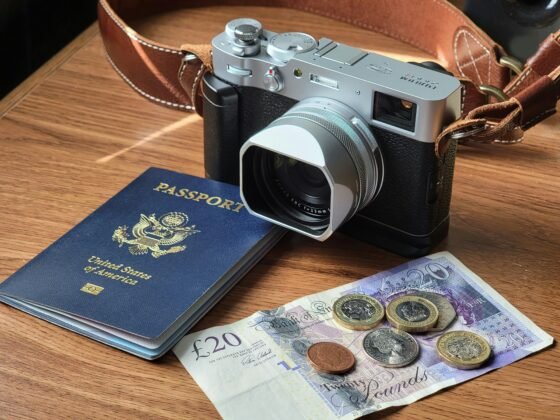
For many people, winter is one of the most magical times of the year, bringing with it some exciting celebrations, fun family moments, and so much more. It’s a time of giving and receiving, a time to get together with those you love and enjoy the festivity of the season, but it’s also a time that brings new risks and dangers, especially on the roads.
Statistics show that 70% of the entire US population lives in places that have snowy and icy roads during the winter season, leading to lots of slippery risks, reduced visibility problems, and many other issues that can raise your chances of being in an accident or collision with another road user.
Even in states where the sun keeps on shining in winter, like Florida, these particular months can still be treacherous as so many people flock from colder states to the warmer regions, leading to higher levels of traffic, far more distracted drivers on the roads, and additional risks for everyone to worry about.
For all of these reasons and more, it’s important to know how to adapt to the changing conditions and circumstances on the road when winter comes along. Below, you’ll find a number of useful safety tips designed especially for winter, helping you navigate icy and busy roads more comfortably and keep yourself and your passengers as safe and protected as possible.
Slow it Down
No matter what time of year you happen to be driving, it’s always wise to pay attention to speed limits in your area and make sure you stick to them at all times. But in winter, you might want to drop your speeds even lower. This is because braking distances on icy roads in winter can be up to 10 times longer than on dry roads in summer.
In simple terms, stopping and slowing down your vehicle takes a lot longer when the snow has fallen and ice has formed on the road ahead. So, if you’re approaching an intersection, a set of traffic lights, or need to brake suddenly due to an oncoming hazard, it will take a lot longer. Being at a slower starting speed will help you compensate for this, so many experts recommend driving at least 5-10mph slower in winter.
Keep an Eye on the Forecast
For many states across America, weather can be quite unpredictable during the winter. One day, the temperatures might not seem too bad and the sun might even be shining down quite brightly, but the very next day, snow may start to fall and icy patches can start to build up on the roads ahead, with strong winds and low visibility also causing issues for drivers.
A good way to stay ahead of the game and keep yourself safe before any big journeys is to check the weather forecast on a regular basis. Make sure you know, in advance, what the temperatures and conditions are expected to be so you don’t get caught unawares or taken by surprise when you head out on the roads.
Reschedule if Needed
Following on from the previous point, it’s also recommended to not simply force yourself to drive or go ahead with a big journey if you don’t feel safe, or if the conditions don’t seem adequate for that kind of trip.
Ahead of the holiday season, a lot of people might plan road trips or cross-country journeys to see their friends and families. However, if you wake up on the scheduled day of your drive and see lots of ice and snow outside, don’t be afraid to hold off for a while and reschedule. It’s much better to arrive safely in one piece a day or two later than run the risk of getting in an accident just to arrive on time.
Prepare Your Vehicle
When winter comes along, we tend to change our habits. We dress differently, for example, making use of hats and scarves and gloves to keep ourselves warm, and behaving a little differently when we’re out and about in order to avoid slipping on the ice or staying out in the cold too long.
It’s a similar story for your vehicle; cars need to be prepared for the cold and harsh conditions of winter too and may need to be treated differently compared to how you might use them in summer. You might need to set up some chains or snow tires, for instance, or check your tire pressure more regularly. Check out key winter car care tips and follow them all to stay safe.
Remain Focused and Alert
It doesn’t matter what part of the country you live in or what time of year it happens to be, it’s always important to be alert and focused when you’re sitting behind the wheel. Just a single lapse in concentration can prove to be catastrophic, and so many people end up in accidents purely because they let themselves get distracted or weren’t paying attention to their surroundings.
So, when driving in winter, make sure to stay focused. If you’re on snowy roads, pay close attention to the conditions around you and the other vehicles and be ready to react accordingly if anything happens, or if you’re in a dry and mild area with lots of traffic from ‘snowbird’ visitors, be sure to keep your distance from other vehicles and stay concentrated at all times.
Emergency Preparation
Another useful travel tip for winter is to prepare an emergency kit that you can store in your vehicle at all times, filling it up with items like flashlights, blankets, flares, starter cables, first aid supplies, and so on, making sure that you’re ready for the worst-case scenario and prepared for any eventuality.
Cars can often break down in winter and the risks of accidents are high. You don’t want to find yourself in a situation where your whole family is sitting on the side of the road, waiting for emergency help to arrive, in freezing temperatures without any items to help out, so having an emergency kit can make a real difference.
Conclusion
Winter can be a wonderful time of year, but in order to make the most of the season and enjoy the holidays and celebrations all the way, it’s important to stay safe while traveling. Keep these tips in mind and have the best possible winter.












